A2 (594 X 420mm) Posters on A2+ quality 200gsm gloss paper of the 20mm wide angle photo taken on 20th January are now available for the special price of AU$10 + $10 P&H (postage covers up to 3 posters to an address) within Australia, P&H $12-15 for most areas overseas. Discounts available for larger quantities.
Signed A3 prints of most other images on this or my other pages are available for AU$70, and A4 for $40, including post within Australia
Contact me at: gordon AT gunagulla dot com, but replace the AT with @ and dot with . (no spaces)
After midnight on 11th February when the clouds cleared I was able to set my camera with a fisheye lens to take a long exposure while I searched for asteroids at work. By then the head was set, but the tail is seen faintly through the horizon haze extending to the Small Cloud of Magellan galaxy. Extreme stretching of the contrast doesn't show any sign of the tail above the SMC. The Milky Way around Centaurus and Carina is seen on the left side of the image.
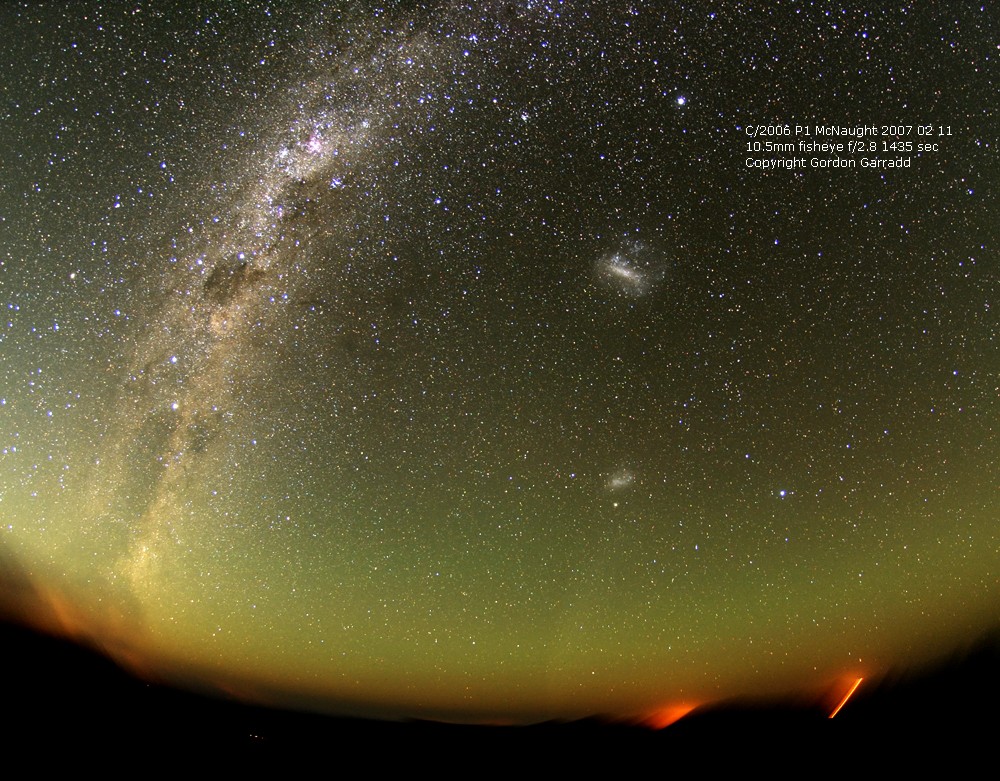
Thunderstorms and plenty of cloud over the weekend at SSO, so here is a panorama made on the evening of 11th February showing the AAT dome and some mammatus clouds, plus the Warrumbungles skyline after the late afternoon hailstorm had passed

Later on in the evening there was some nice lightning over and beyond the Pilliga Forest where I often go mountain biking in the afternoons before observing asteroids in the evening.
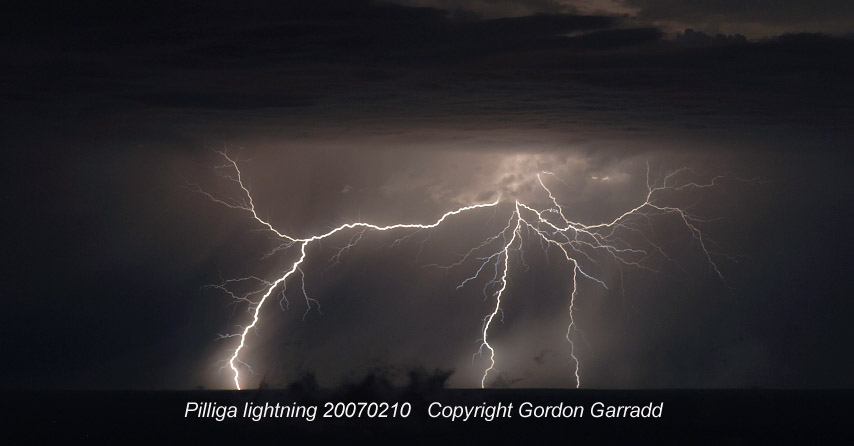
Despite some cloud I was able to get a clear view tonight and took this sum of 2 exposures totalling just over 500 seconds. The wide angle photo below shows the tail extends to the Small Magellanic Cloud, with the large cloud visible near the top.
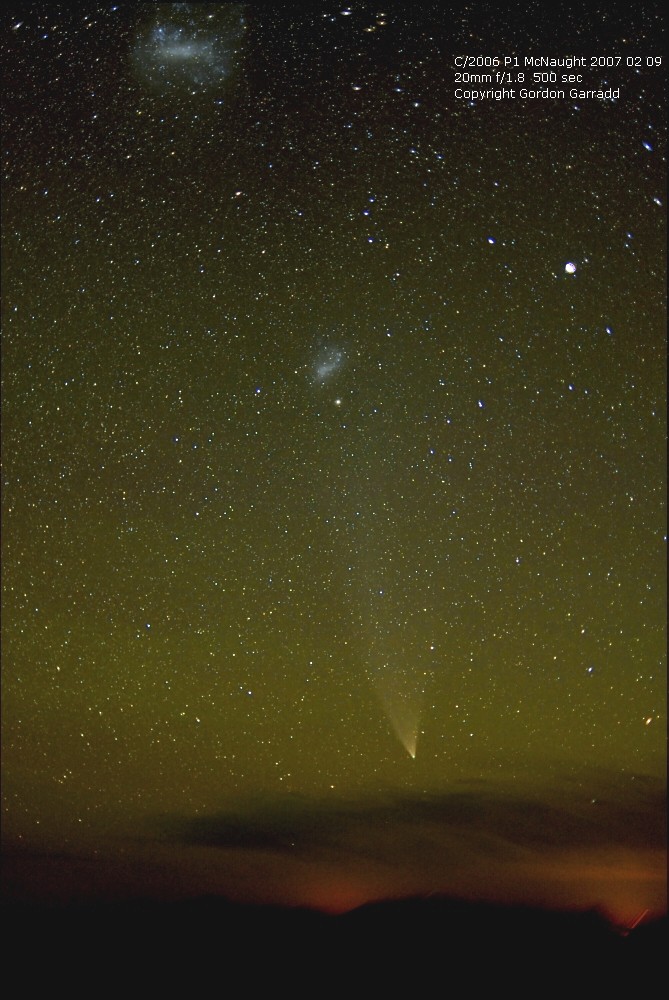
In the brief period of dark sky before moonrise last night I was able to see about 15 degrees of tail with the naked eye when not fully dark adapted. In the wide angle photo below the tail extends towards the Small Magellanic Cloud galaxy.
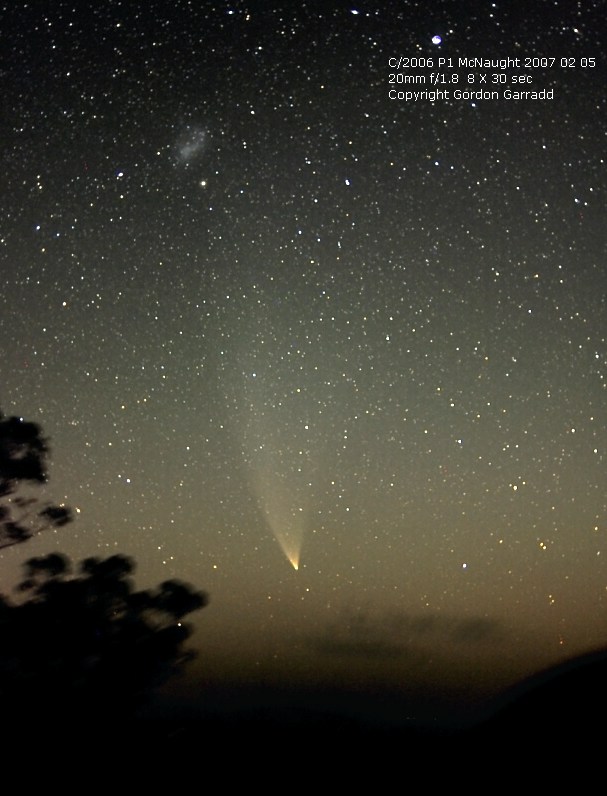
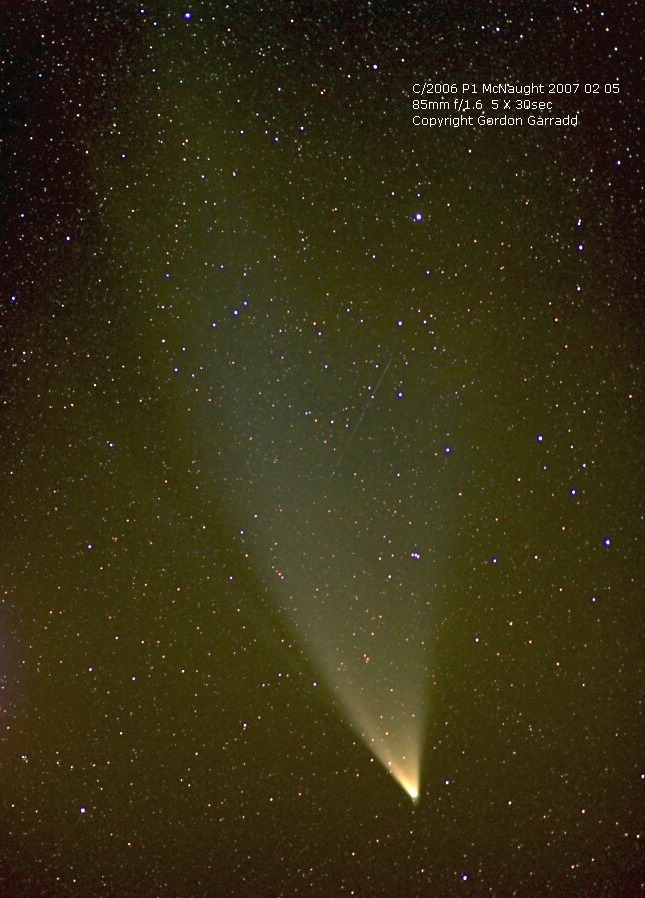
As the just past Full Moon rose last night I was able to get these 2 images in a fairly dark sky.

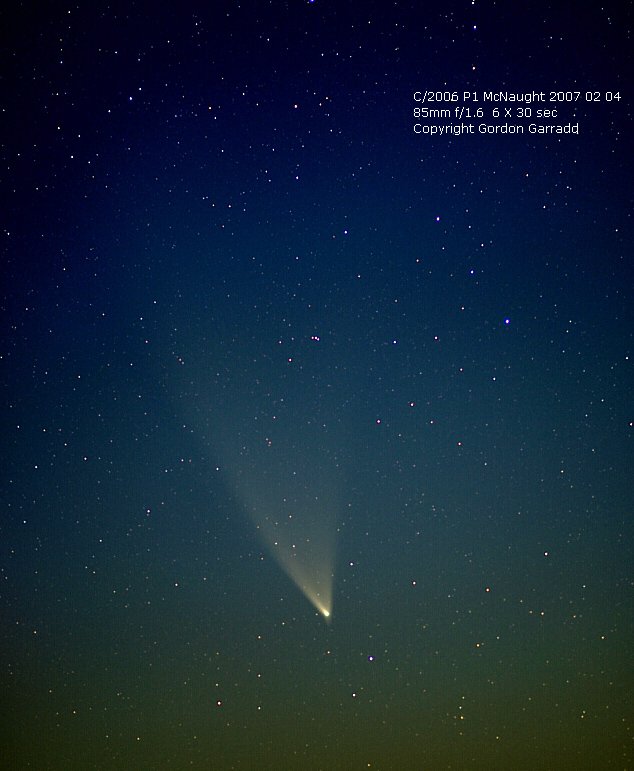
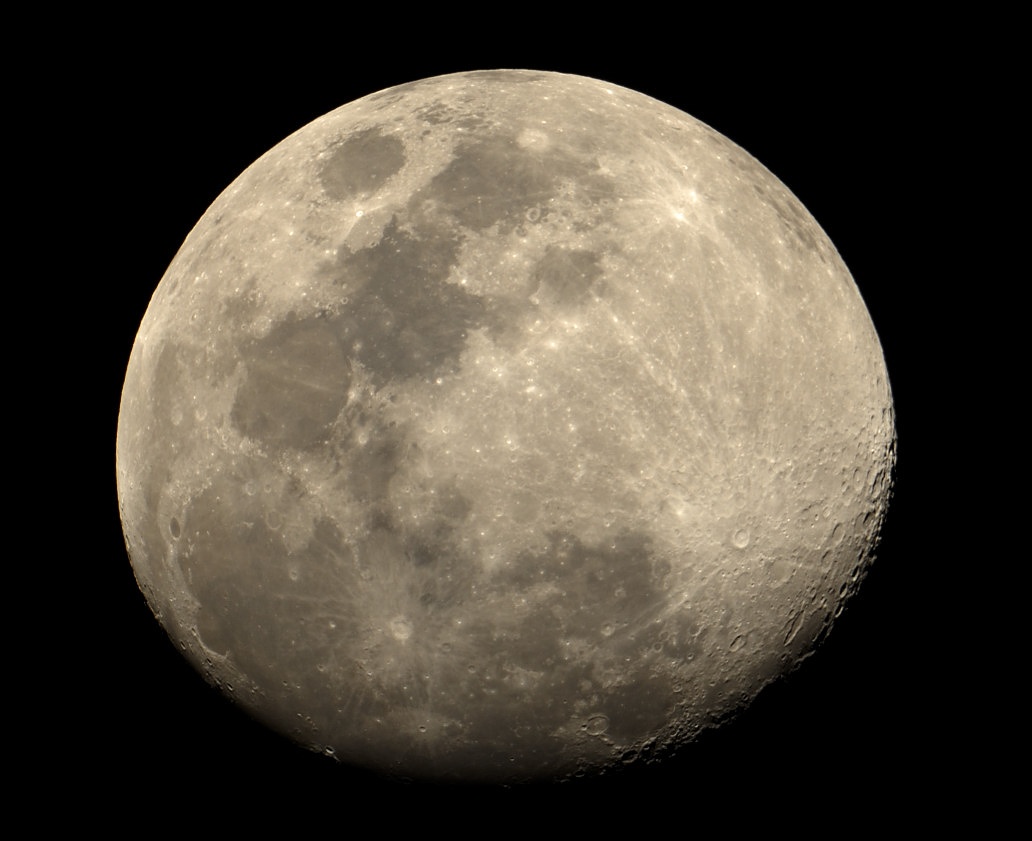
Back home after a long observing run at SSO, so I can finally take some images through my 25cm Newtonian telescope, this one scaled to give an approximation of its appearance at the eyepiece, with an insert that has been processed to show the dark line down the centre of the tail- probably just the relatively hollow centre, not a shadow of the nucleus.
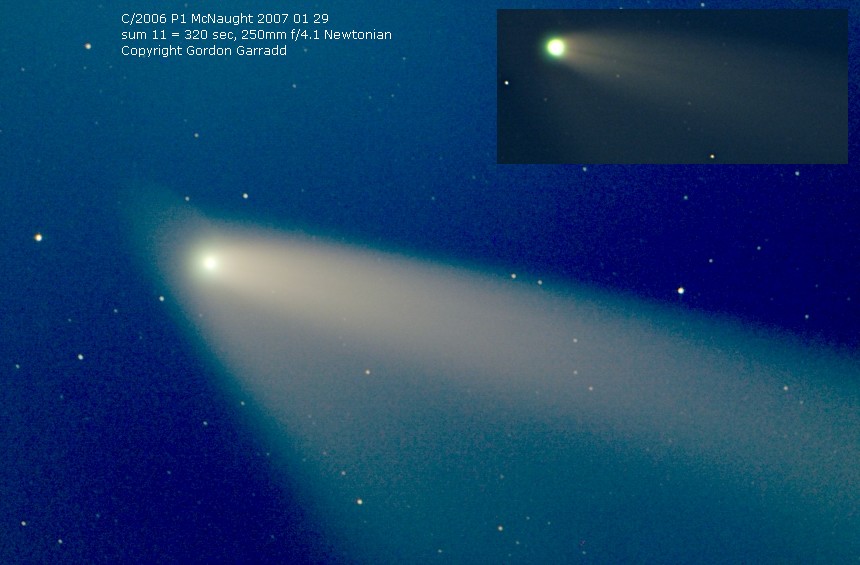
Comet McNaught has become a rather obvious easy naked eye object in the morning sky, with about 15 degrees of tail visible this morning (29th Jan). Here's 30mm and 85mm lens photos taken in very gusty wind conditions from the edge of the cliff. 60km/hr gusts just above the ground meant I had to physically hold the tracking mount to avoid it moving during the exposures.

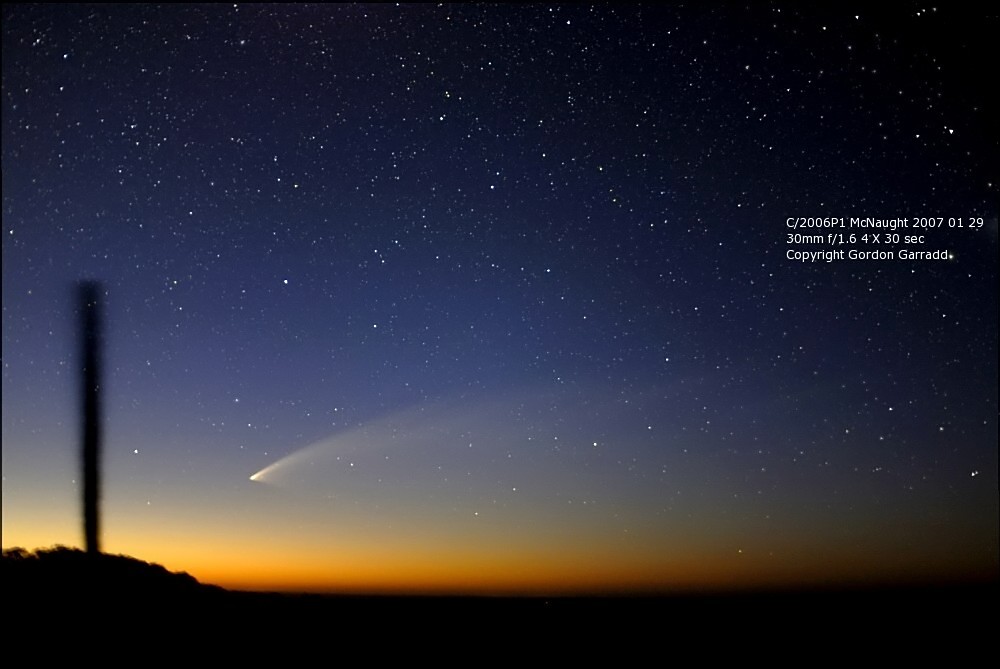
The Moon continues to brighten and hide the tail in the evenings, making images from the 26th and 27th less spectacular, so I did
some work with images that show the tail with an 85mm lens, taken on the 24th when the moon wasnt so bright.
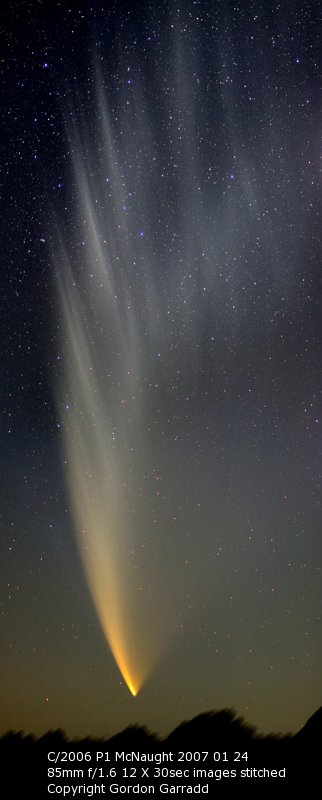
Comet McNaught is now visible in the evening and morning twilight, although the twilight is much brighter in the morning, so it remains more easily visible in the evening. I could see the comet with 2 degrees of tail with the naked eye this morning. The comet is seen here with the Anglo-Australian Telescope dome and an inconveniently placed Grass Tree.

Clear at SSO tonight, but I am observing and didnt have enough time to get everything properly set up. I experimented with a polarising filter to cut back the moonlit sky background. Yes it has a bit much jpg compression, I will sort that out when I have time.
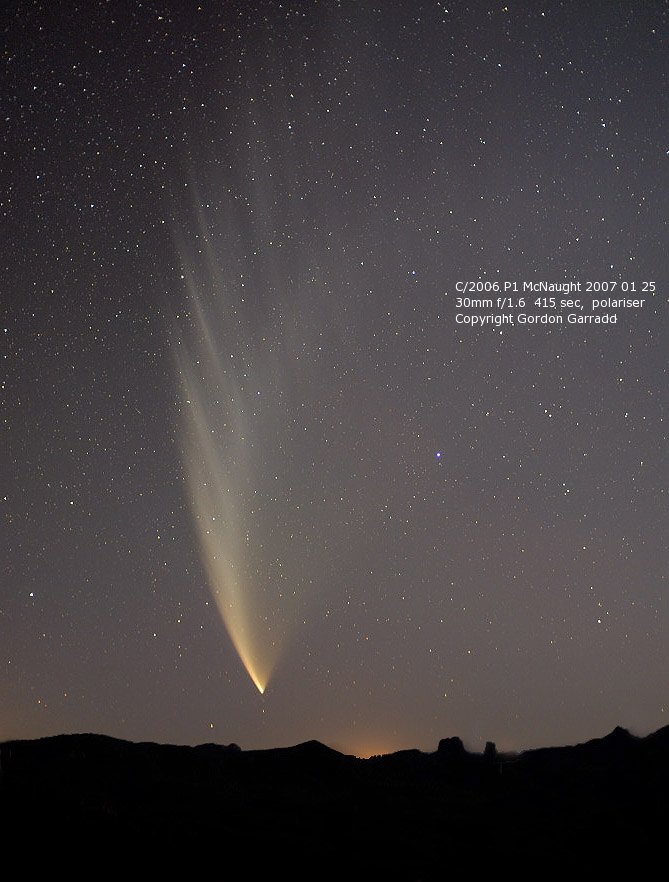
Tonight Rob and I had to drive about 200km SW to clear skies. We had a 5 day old moon in the sky which significantly reduced the amount of tail visible, although about 30 degrees of it was visible to the naked eye.
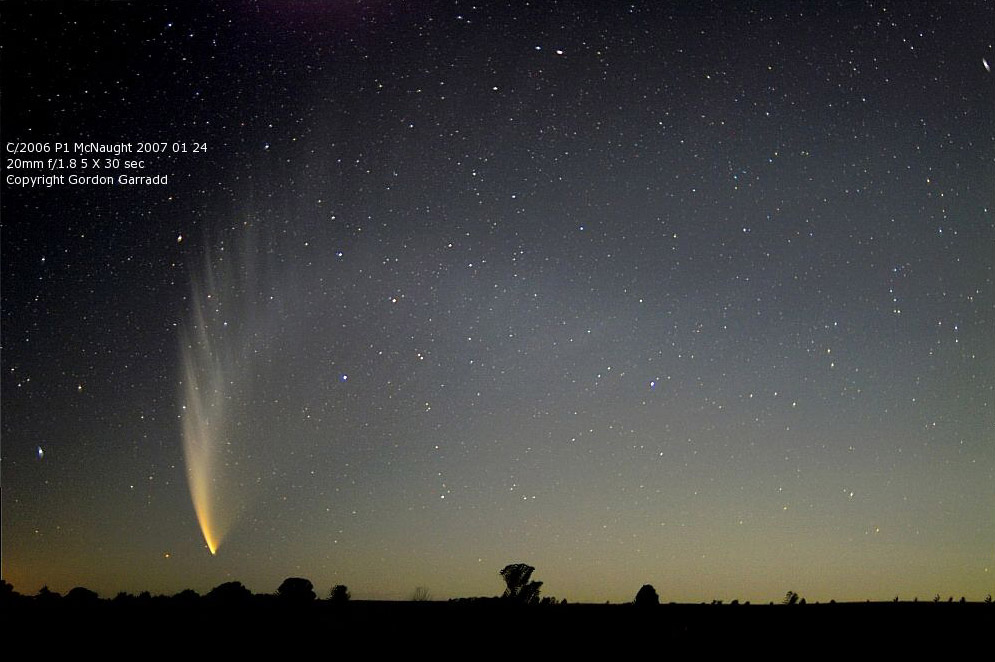

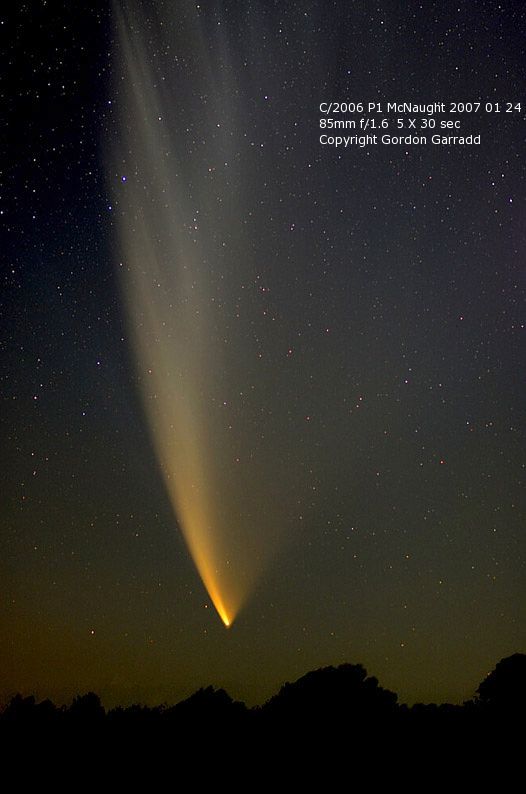
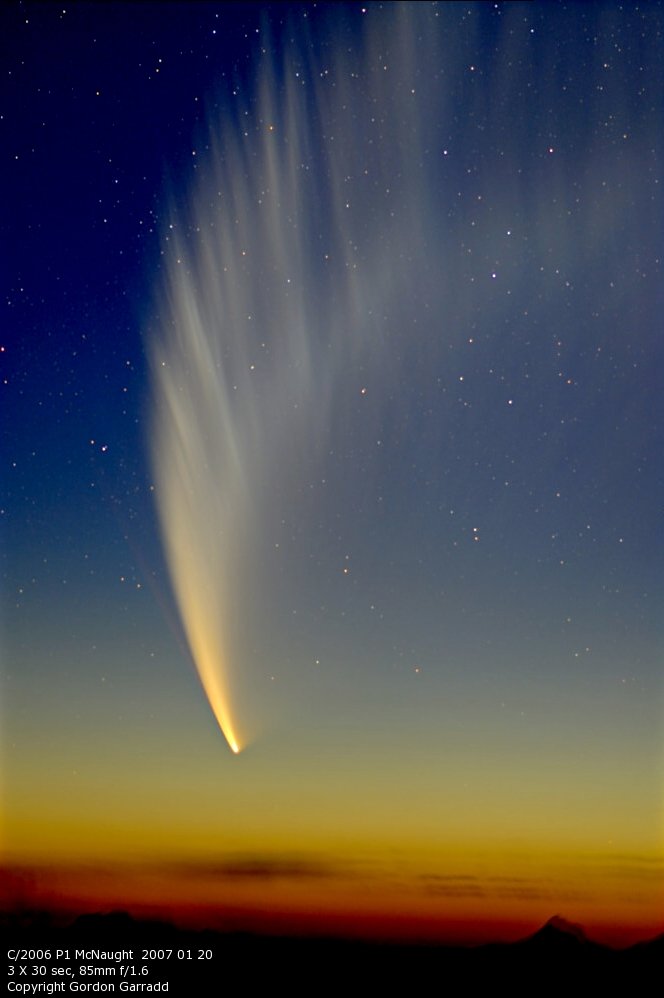
The comet during relatively bright twilight, 3 X 30 sec 85mm photos added together, with the probable neutral Sodium
tail visible as the straight feature to the left of the dust tail.
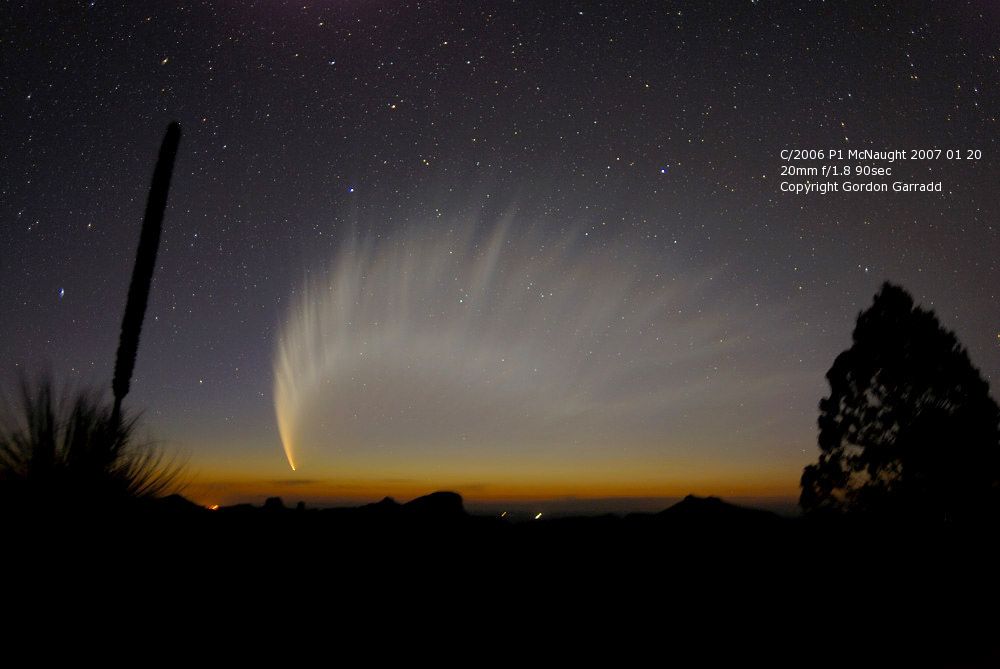

A straight tail is faintly visible to the left of the massive dust tail, this is probably a tail of
neutral Sodium, as it is bright in red light, but not seen in blue light.
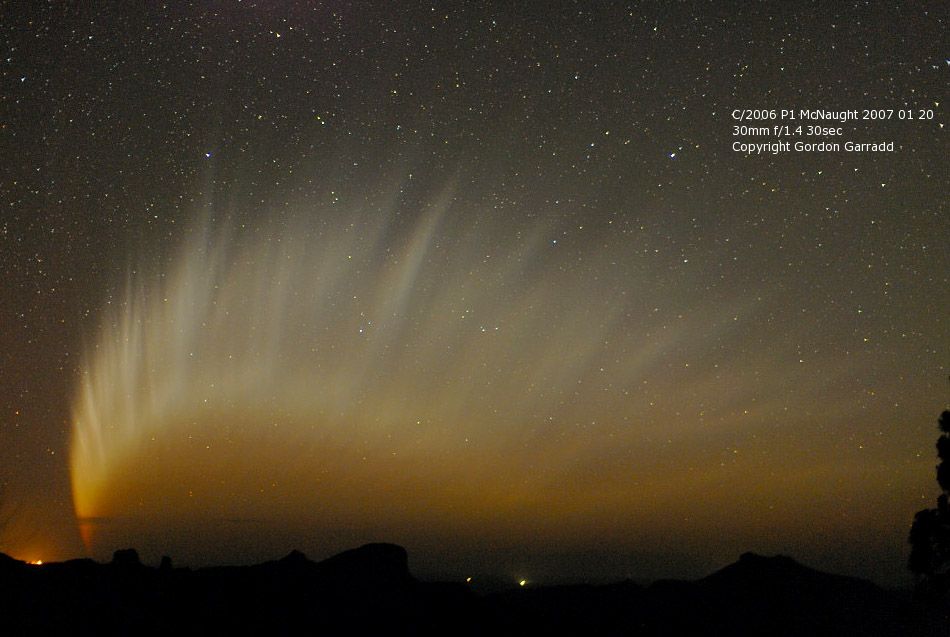
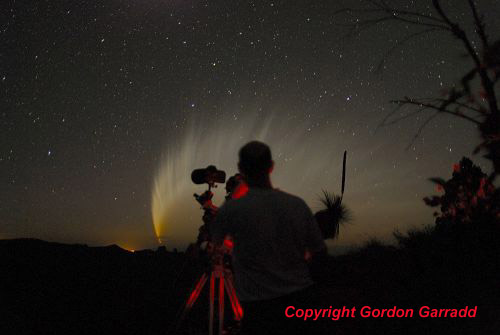
Rob McNaught taking images of Comet McNaught on 20th January, 2007 at Siding Spring Observatory
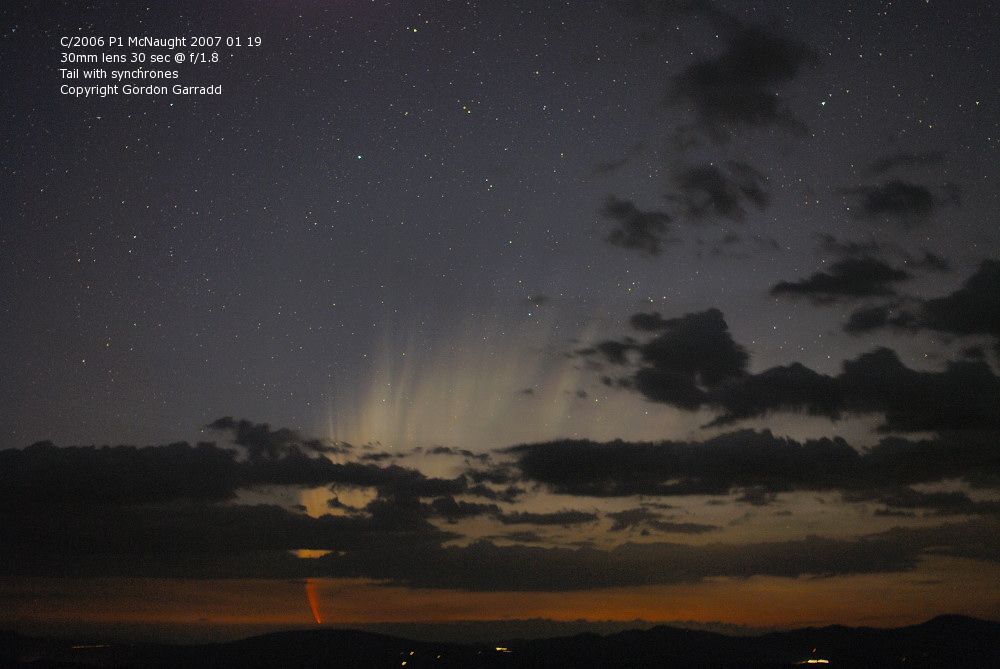
30mm lens, 30 sec @ f/1.8, ISO 200

This bushfire is burning about 10km to the ESE.
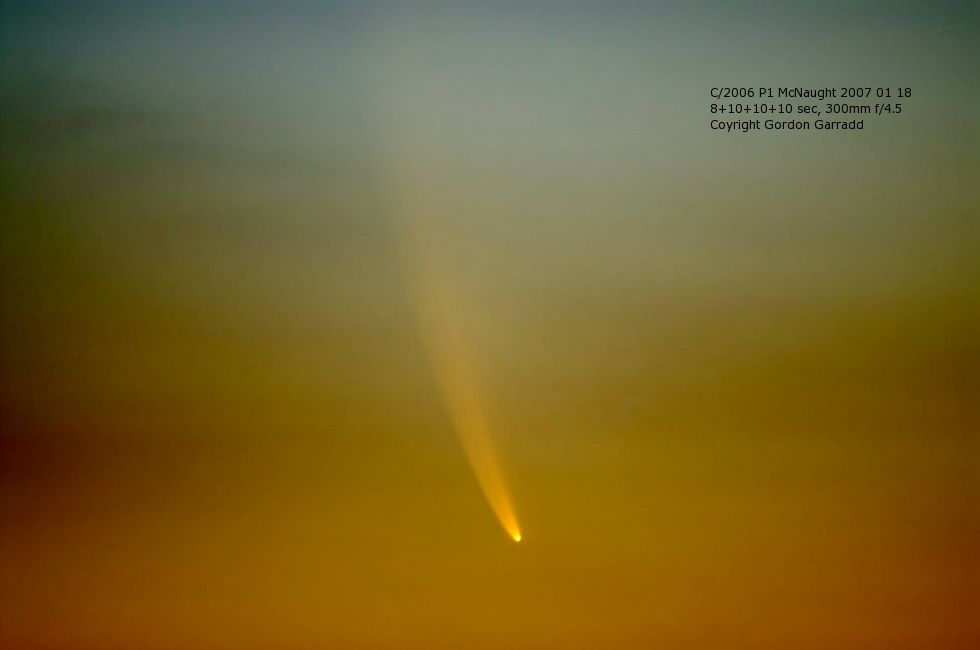
300mm lens photo through smoke haze
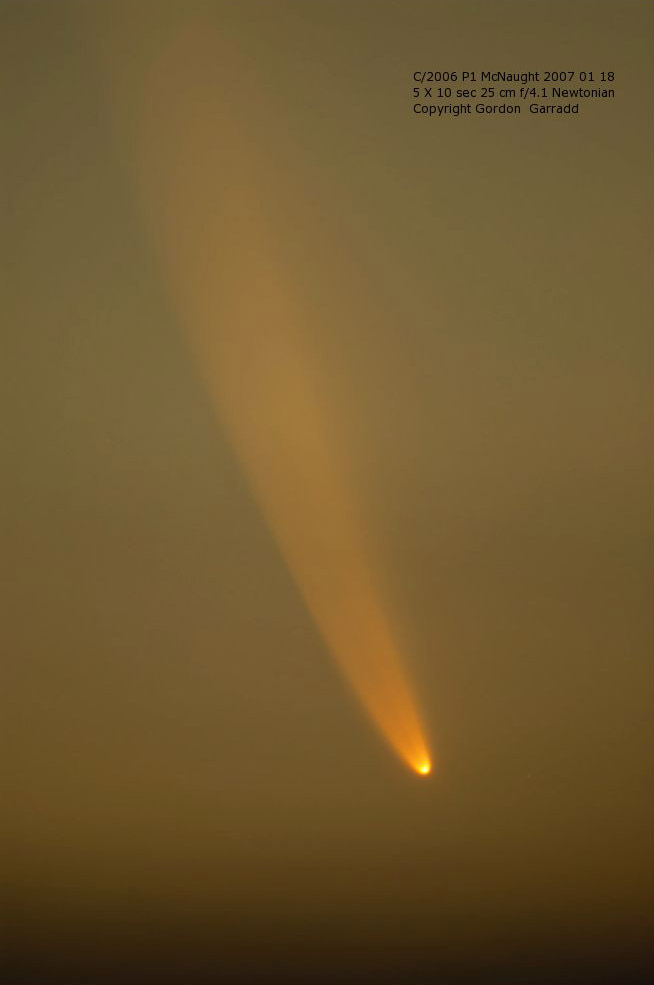
25cm Newtonian photo just before coma went behind thick cirrus cloud
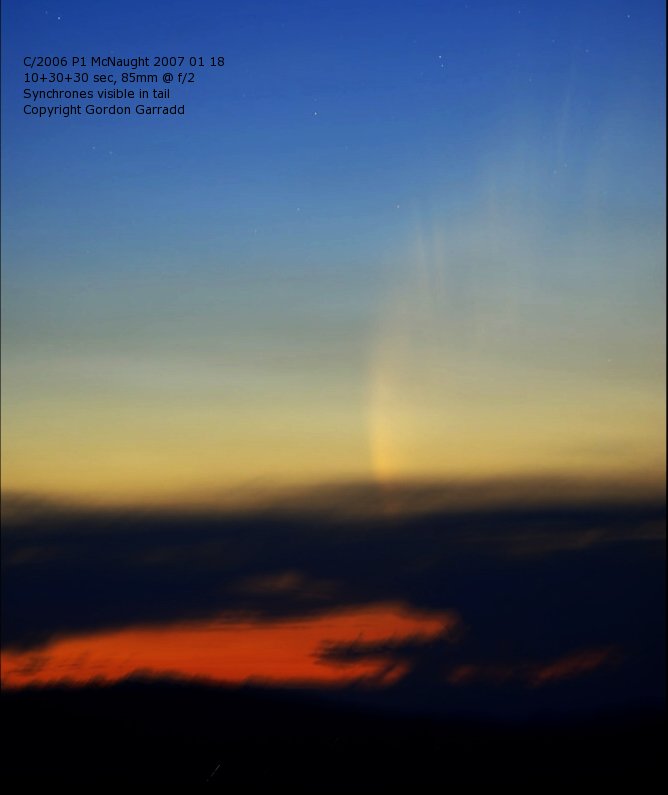
85mm photo showing synchrones in dust tail through smoke haze

This bushfire is burning about 10km to the ESE and the wind is blowing the smoke in my direction,
although most of the smoke in the photos is from more distant bush fires.
Photos taken from Loomberah, Siding Spring Observatory (20th Jan), SW of Dubbo (24th Jan), NSW Australia with a Nikon D200 camera.
All Images Copyright © 2007 Gordon Garradd, and may not be reproduced on other websites without my permission
High resolution images for publication may be purchased from Science Photo Library
Back to Home Page for photographs of other comets and lots more